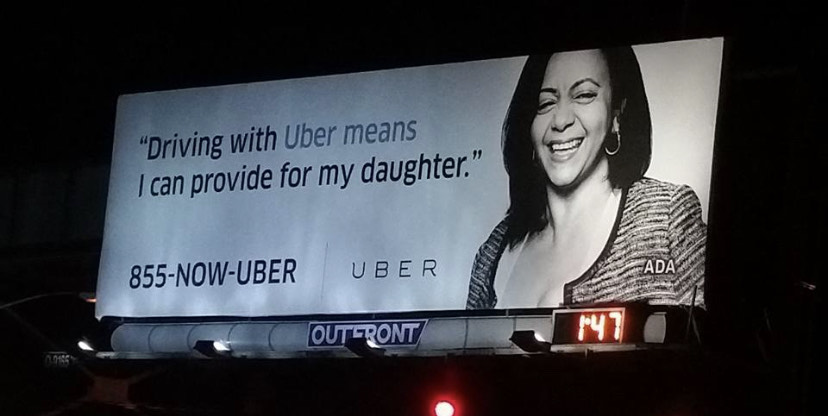Business
Women taxi drivers are 1/10th of workforce
By Ishani Konar
Of the 80,000 people driving taxis, limousines, Ubers, Lyfts and other ride-share vehicles in New York City, women are behind the wheel of only a few. Sixty-year-old Adalgisa Sanchez is one of those 8,000 women.
With her son and daughter, single mother Sanchez moved to New York from the Dominican Republic in 1993. Ten years later, her then 21-year-old daughter, Adalis Martinez, was diagnosed with colon cancer. “When I find out, it change my life dramatically,” said Sanchez, in the English she still is polishing.
Martinez began chemotherapy during what would become seven and half years of treatment. In this time, the medical bills piled up. She paid some of them off by driving for Uber, where her brother, Claudio Sanchez, already was on the payroll. “I remember he said, ‘You speak a little more English, better than me,’” she recalled. “ ‘It’s good for you to go.’ Then, I say, ‘Oh okay let me try.’ I really enjoy it. Not only because I did it for my family … Driving for Uber was very surprising. It showed me so many places I didn’t even thought existed.”
While driving for Uber was a practical decision, it also brought her a little bit of fame. Uber chose her face for a Bronx billboard and for ads on the back of city buses. She’d been chosen as one of its top 10 drivers.
“They call me the VIP top driver,” she said.
Her job also gave her the flexibility she needed. “Driving for Uber was very convenient because you choose your time, any time, it’s free. You have more time for family, I have time for my daughter to take care of. You are in control of your own schedule. ”
Choosing her own hours made her, as a woman, feel safer. “I can do overtime in the day, not at night,” she said, “because I scared to be working overnight. Because I don’t want to be used by men, because they can be with drugs or alcohol or anything like that. Most danger would be the night time.”
Senem Ekiz’s worries are similar to Sanchez’s. For 14 years, Ekiz, 34, has driven for A Class Limousine car service, her father’s company. “I could never imagine myself ever doing Uber at night in the city,” said Ekiz, who works part-time. “There’s no way. Yeah, it’s too dangerous for me.”
Some women also feel they are treated differently than their male counterparts. Ekiz recalls a time when she and her dad, who has offered car services for 24 years, both were picking a group of clients from a New York City Airport. “We were standing, like, idling together. A cop came in and wrote him a ticket. And I did the same thing, but he … let me go.”
“They probably thought,” she said, “‘Oh, who is this chick doing this job?’”
Similarly, said Sanchez, “Men see us as soft, or, like, we can’t say nothing, anything, back.”
There are ways that men and women Uber drivers appear to be equal. “They go by the number of hours that you work, not by whether you’re single, married or a man or a woman,” Sanchez said.
She thinks more women should consider ridesharing as an option for earning an income. “Uber has promotions,” she said. “They treating you according to your work, nothing else.”
More than the income, Uber provided Sanchez with freedom. Adalis Martinez died on July 14, 2020. Her grieving mom took a break from Uber to focus on Agust & Ambar, the business she and her daughter built together, selling earrings made out of clay.
“I’m 60, but I want to continue and save her legacy. I’m 60, but now I completing a program in graphic design and marketing,” said Sanchez, who also is waiting for a Taxi & Limousine Commission license.
After driving for Uber just occasionally these last few years, she will soon drive more regularly.
Ekiz also now juggles jobs. She only chauffeurs several long-term clients, one of whom helped her get a full-time job as a business developer at Infosys.
Ekiz still likes to drive. She said she believes other women might also find driving pleasurable, while they make money.
“In all of my history of taking Ubers and taxis, I’ve had only one female driver,” she said. “I hope to see women feel more comfortable. I hope there to be enough security measures, clearly defined regulations … I do hope to see more women doing this in the future.”



